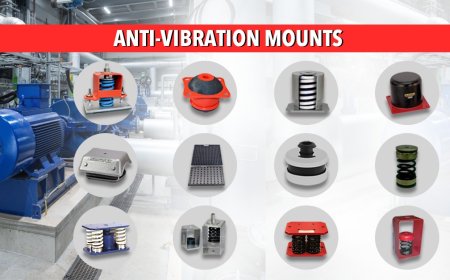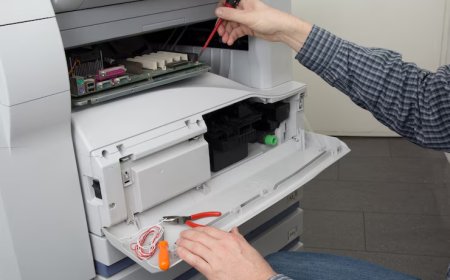What is a Wastewater Treatment Plant (WWTP)? A Comprehensive
A wastewater treatment plant (WWTP) is a critical facility in which wastewater is treated to remove pollutants and clean water returned to the environment. With technologies such as granular sludge reactors and bioelectrochemical systems, WWTPs are transforming into resource-recovery centers that safeguard ecosystems and optimize water use. This blog takes a deep dive into the kinds, technology, and the future of WWTPs.

Introduction
Water is necessary for our survival, but as the world grows and our demands for drinking water explode in kind. Wastewater, or water that has been used and is typically polluted with contaminants, must be treated before being released into the environment. This is exactly where Wastewater Treatment Plants (WWTPs) enters. These constructed facilities are vital and indispensable for balanced environmental health and for public health by cleansing of wastewater originating or resulting from kitchens and bathrooms, industrial facilities and rainwater.
Currently, WWTPs are not only pollution abatement facilities but transitioning to resource recovery centers converting energy, nutrients, clean water, and elements into commodities. As water stress increases worldwide, the dual role of WWTPs as wastewater treatment and resource recovery systems has gained importance. In this post well look at what is a WWTP and the types of treatment plants, as well as some of the new innovations helping to define the future of treating waste water.
What is a WWTP?
Wastewater Treatment Plant (WWTP) is a plant that works to remove contaminants from wastewater so it can be discharged to the environment or reused. The usual treatment is a multi-stage one to target different sorts of pollutants in the water. These processes can comprise physical, chemical, and biological treatments, depending on the water quality.
The treatment is necessary for the protection of not only human heath, but also the environment. When left untreated or treated improperly, wastewater can cause water pollution and the dissemination of diseases, as well as harm aquatic life. WWTPs preserve ecosystems, conserve the water source and protect the community from dangerous pollutants by treating the wastewater prior to discharge into the river, lake or ocean.
Types of Wastewater Treatment Plants
Wastewater facilities can generally be classified depending on the type of wastewater they treat and the treatment technology used. The following are the main type of WWTPs:
Municipal Wastewater Treatment Plants
Municipal WWTP treat wastewater collected from residential, industrial, and institutional use. Such treatment plants make use of a combination of domestic sewage and runoff to create wastewater. Treatment Facilities Municipal plants generally operate a multi-stage treatment process which includes the following:
Primary Treatment (Physical): The physical process used to discard large solids, grit and debris to screen and settle.
Secondary Treatment (Biological) Process: Uses bacteria and other microorganisms to decompose organic materials and pollutants in water. This is frequently achieved within aeration tanks, activated sludge reactors.
Tertiary Treatment (Chemical Process): Treatment, following secondary treatment, of wastewater to remove remaining pollutants (e.g. nitrogen, phosphorus) (generally through chemical precipitation, filtration or disinfection).
Publicly owned WWTPs are the most numerous and range in size according to the population served. For example, to ensure water quality in cities, some plants treat millions of liters of wastewater per day.
Industrial Wastewater Treatment Plants
Industrial WWTPs are tailor-made installations for treating industrial wastewater that usually has a wider spectrum of pollutants compared to domestic wastewater due to the presence of specific pollutants (e.g. chemicals, heavy metals, toxic compounds). Unlike non-industrial municipal plants, industrial WWTPs involve specific treatment processes to generate appropriate methods that are designed to cope with the particular challenges of distinct industry sectors. The following are just some of the industries that require this type wastewater treatment:
Pharma: Sewer water could have traces of antibiotics, hormones or solvents.
Food and Beverages: Wastewater could include organics such as sugars and oils.
Fabric Production: Wastewater may contain poisonous dyes and other chemicals.
Advanced treatment processes such as chemical coagulation, membrane filtration, or advanced oxidation processes (AOPs) are often used in industrial WWTPs to efficiently treat wastewater and meet environmental standards.
Hybrid Resource Recovery Wastewater Treatment Plant
Resource recovery technology is integrated with conventional treatment processes in hybrid WWTPs. They are intended not just to process waste water, but also harvest valuable resources, like biogas, clean water, and fertilizer. Hybrid crops are especially meaningful in areas where resources are limited and water management is important.
As an example, biogas production by anaerobic digestion can offer a renewable energy source, and treated wastewater can be reclaimed for non-potable uses such as irrigation or industrial use. This methodology minimizes the environmental burden and also helps in better future of our coming environment.
Emerging Technologies in Wastewater Treatment
The wastewater treatment sector is continuously advancing with new technologies to render it more efficient, cost effective and economical in terms of value recovery from wastewater. The Aijhabara et al.
Granular Sludge Reactors
Granular sludge reactors are a high rate treatment system, which enables to reduce the hydraulic residence time of the wastewater. They are characterised by the use of granular biomass, which settles more rapidly and is more biologically active than conventional activated sludge. VEOLIA TREATMENT SYSTEMS This leads to a smaller treatment system being able to treat two to three times as much wastewater within a certain volume.
Culligans granular sludge reactors are especially ideal for small footprint applications and/or when larger wastewater treatment capacities are needed. The fact that you can treat more water in the same footprint is a game changer for an urban wastewater plant.
Electrocoagulation
An Epic New Way to Fight Pollution: With Electricity Electrocoagulation is a new technique that uses electricity to rid water of contaminants such as heavy metals, oils and bacteria. Moreover, unlike chemical treatments, electrocoagulation has no chemical addition, and is an environment-friendly process for treating industrial wastewater.
The method consists in passing a current across the water, precipitating the impurities that coagulate and become particles, thus making them easy to remove by filtration and/or sedimentation. This technology is specifically suited to industries with high levels of heavy metal contamination or oil and grease in their wastewater.
Algal-Bacterial Synergy
The concept of algal-bacterial cooperation is newly developed, and the advantages of the algae and bacteria in wastewater treatment have been combined. In this process, microalgae remove carbon dioxide (CO2) and release oxygen, while bacteria degrade organic pollutants. The symbiosis of algae and bacteria provides a synergistic improvement in the overall treatment efficiency and in the reduction of carbon footprint in the plant.
Its early days for this technology but promises to be an incredibly sustainable, carbon-negative method of treating wastewater. It may be of special interest in places that are trying to both cut greenhouse gas emissions and treat wastewater.
Future Trends in Wastewater Treatment
Driven by rapid technological developments, several major trends influence the future of wastewater treatment:
Digital Twins for Predictive Maintenance
AI and digital twins are virtual copies of physical systems that can be employed to optimize the performance of wastewater treatment. With the ability to play through what a plant will do in real time, digital twins forecast how a system will operate, trouble-shoot problems and coordinate maintenance before shutdowns are needed. It increases the efficiency and life cycle of WWTPs, as well as reducing downtime and operation costs.
Nano-Bubble Aeration
Nano-bubble aeration is an emerging technology for enhancing oxygen transfer in wastewater treatment. Through the production of micro-bubbles significantly smaller than conventional bubbles, this equipment increases the oxygen transfer rate by as much as 70%. This reduce energy and make the biological treatment more favorable and cheaper.
Bioelectrochemical Systems
Bioelectrochemical systems (BES) produce current by the degradation of organic pollutants that are present in wastewater. Such systems rely on microbial fuel cells, which transform the chemical power grid of wastewater into an electrical power grid. This kind of renewable energy can be directly utilized for the treatment and/or stored to treat waste. BES is an emerging approach to couple waste treatment with energy production.
Conclusion
Wastewater treatment plants (WWTP) are essential eco-technologies to protect human health and environment. The demand for effective, sustainable wastewater treatment has never been greater as water scarcity and environmental concerns rise. Recent WWTPs are transforming to resource recovery facilities which aim not only to treat wastewater but to recover resource, e.g., energy and nutrient. Novel technologies such as granular sludge reactors, electrocoagulation and algal-bacterial symbiosis could be an alternative for sustainable and affordable wastewater treatment.
Are you prepared to take your wastewater treatment systems to that next level and begin the future of sustainable water management? At Amalgam Biotech Ltd we are dedicated to the next generation of waste water treatment technology, to protect the environment while in parallel, re-capturing valuable resources. Learn more about our innovative technology that can help you update your WWTP.
Visit Amalgam Biotech and start on the path toward a greener, more efficient future!
































